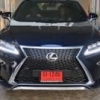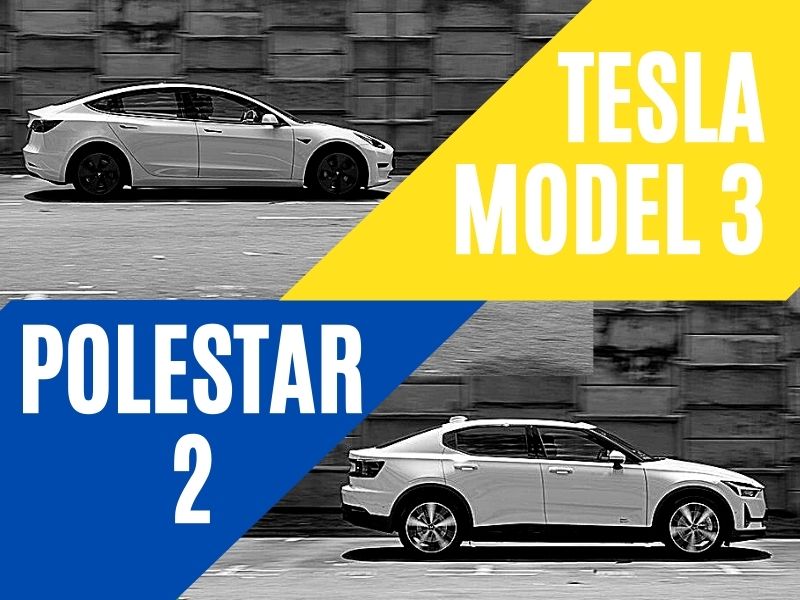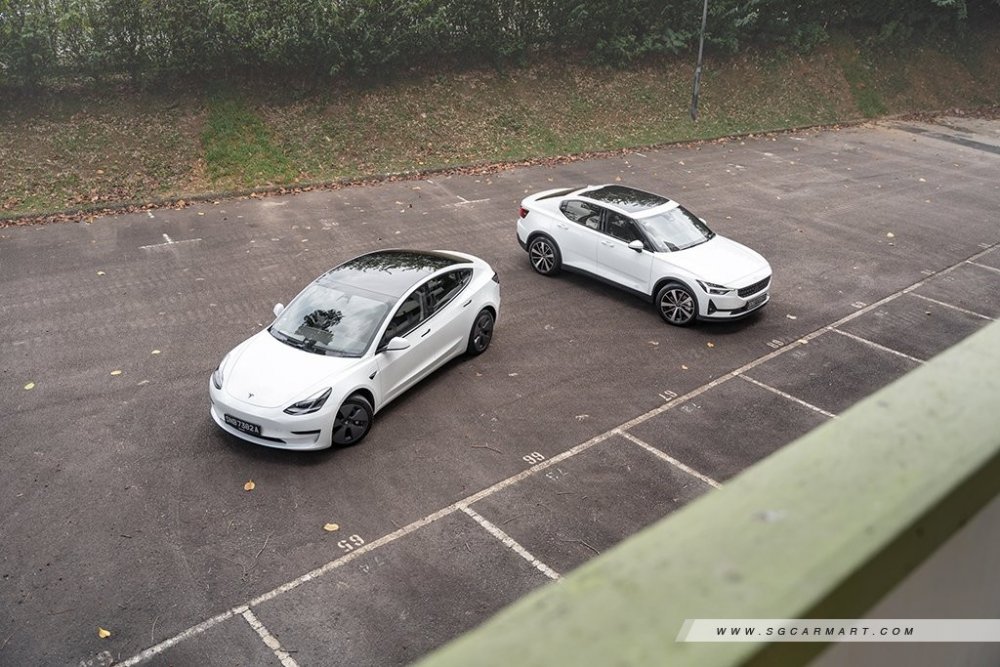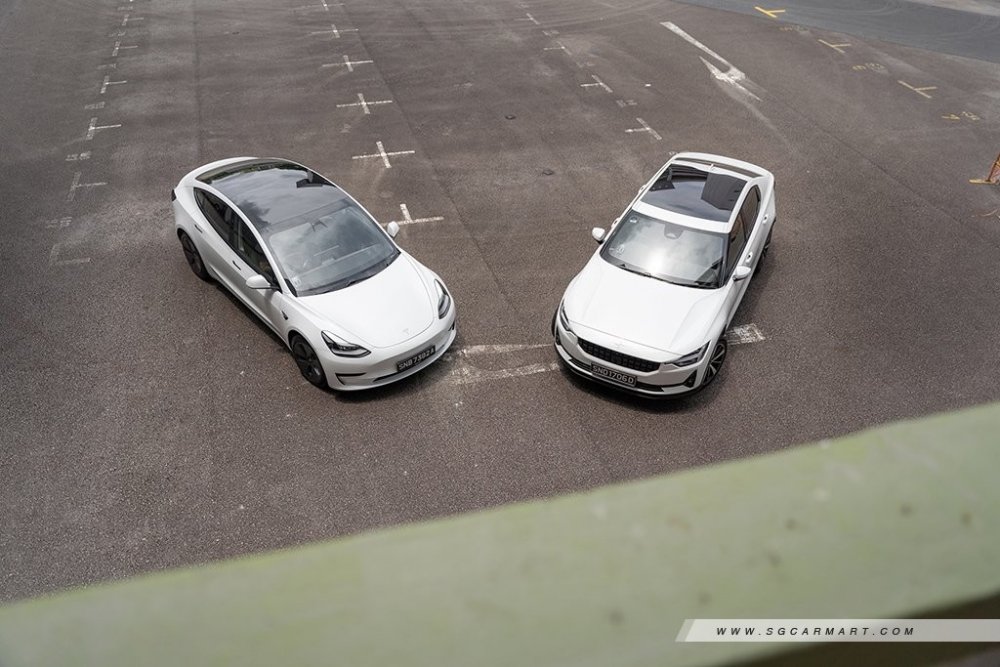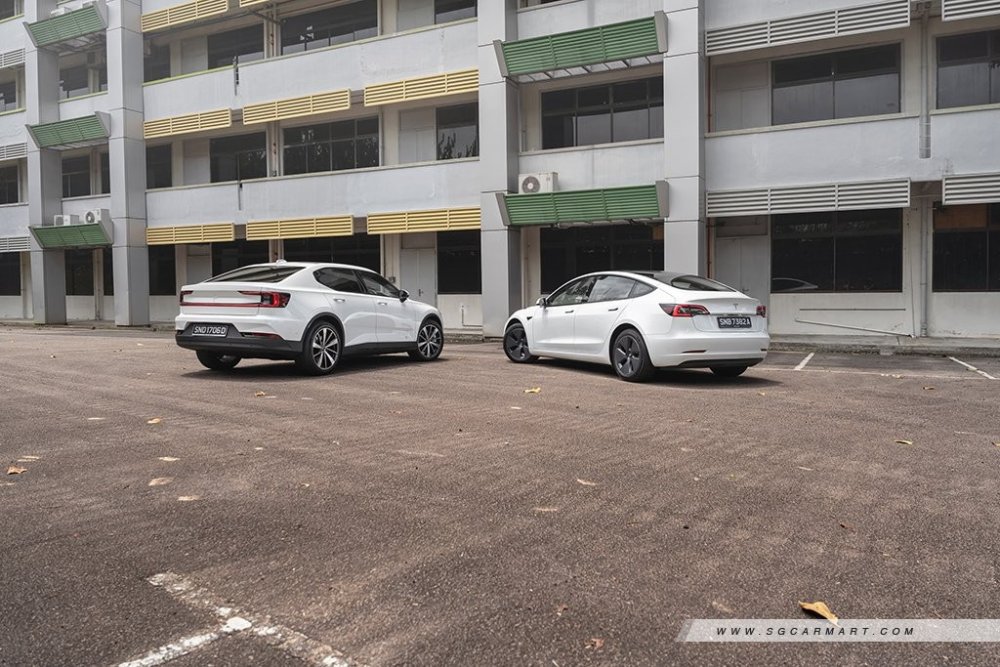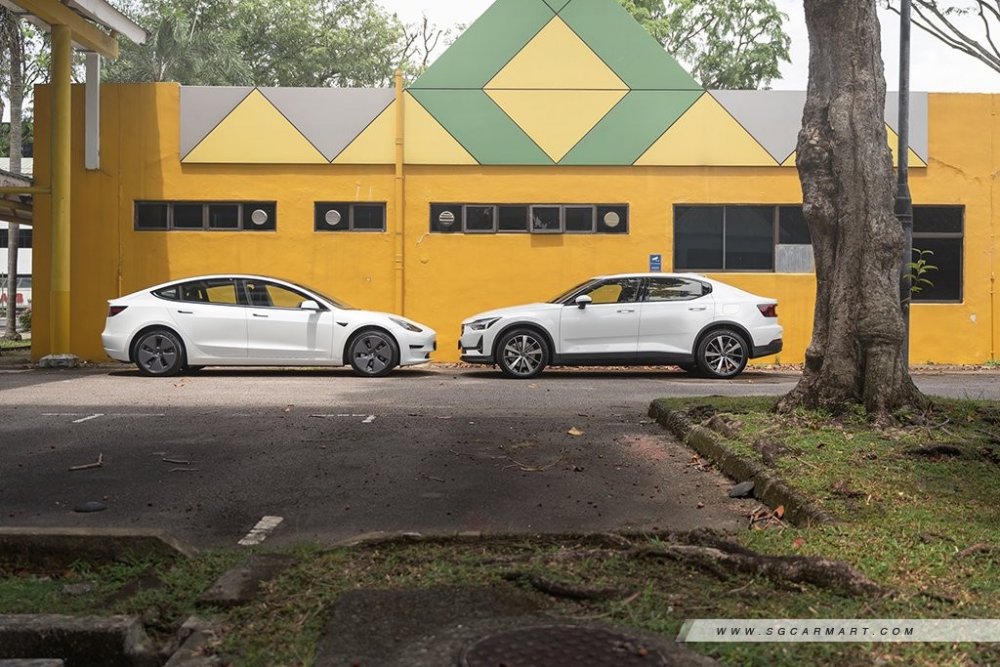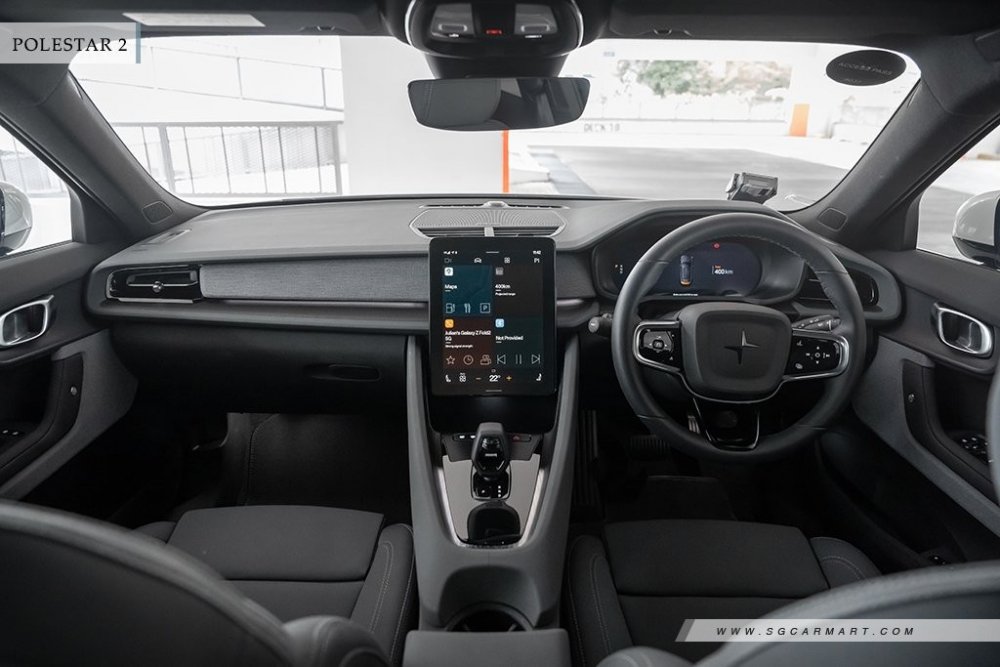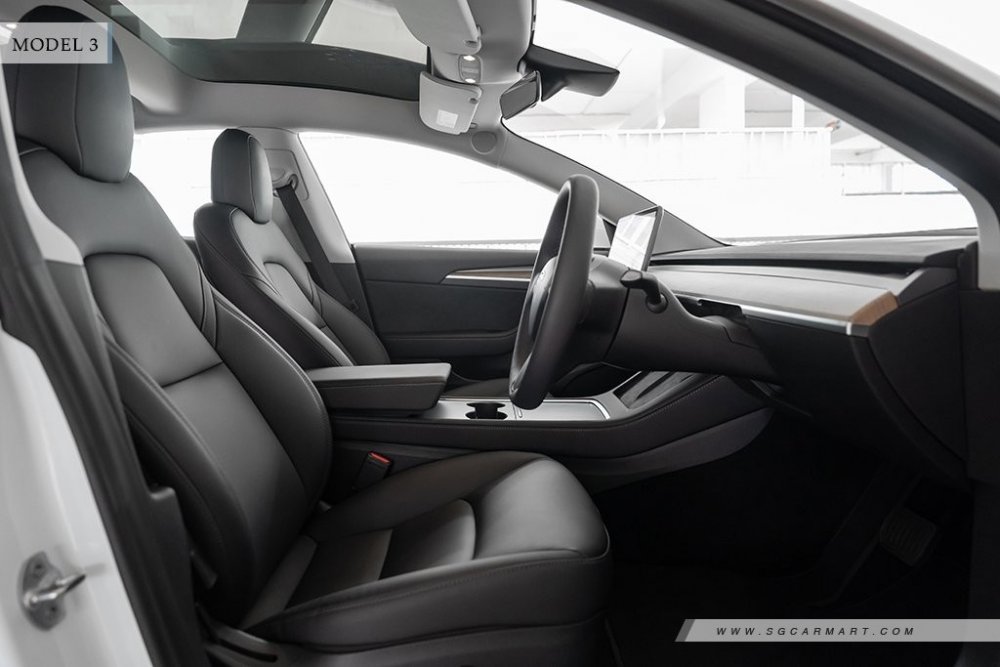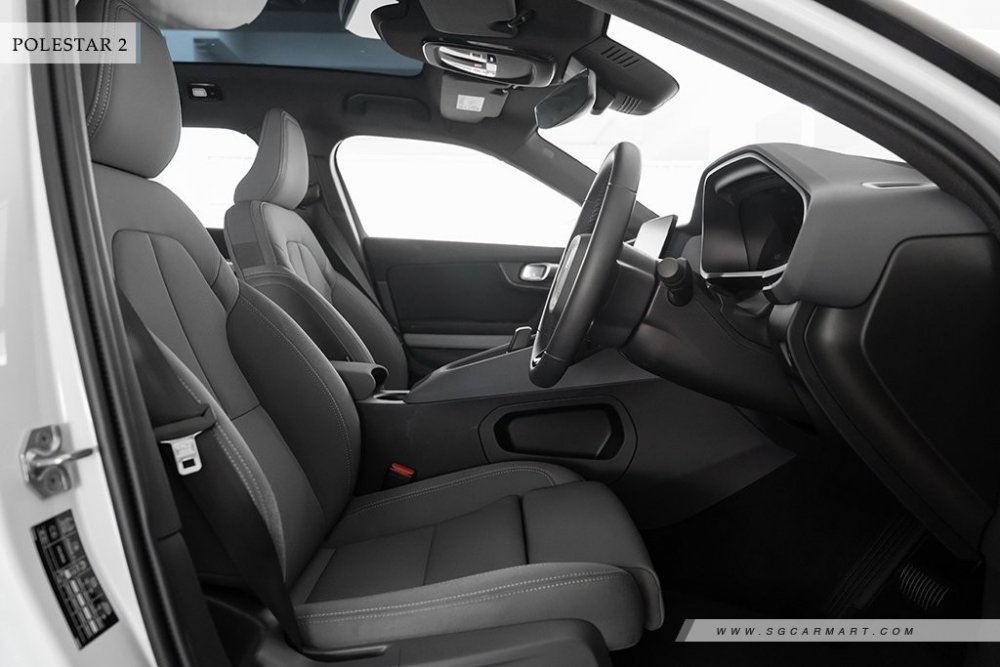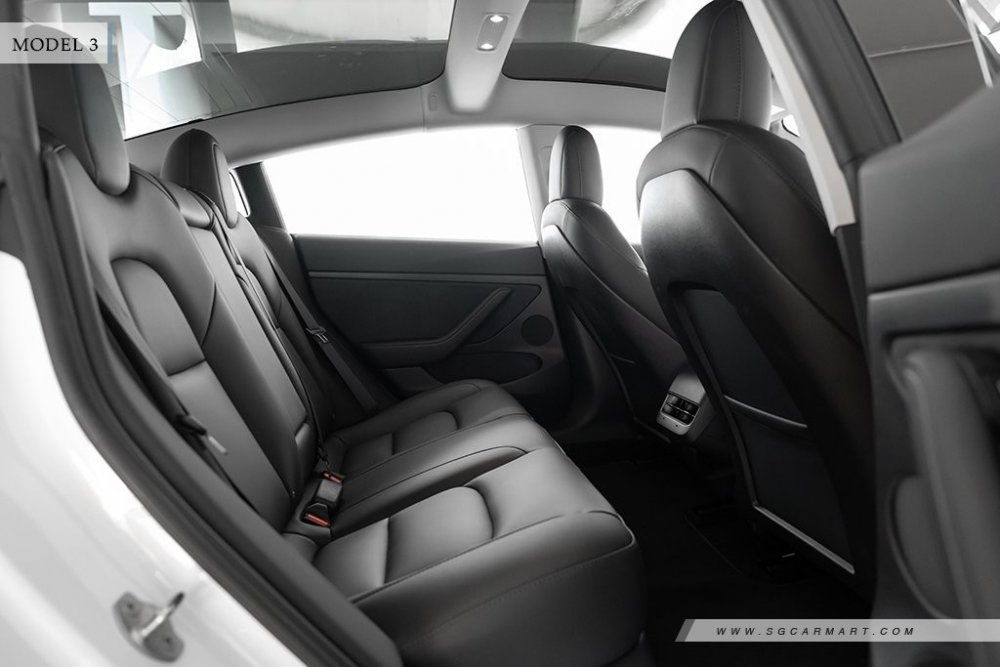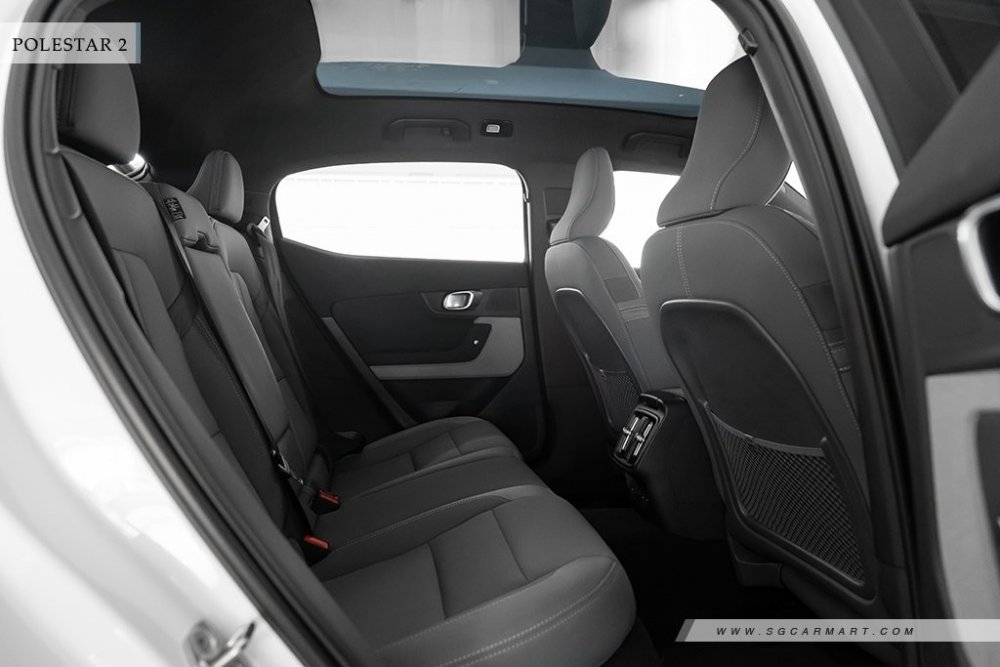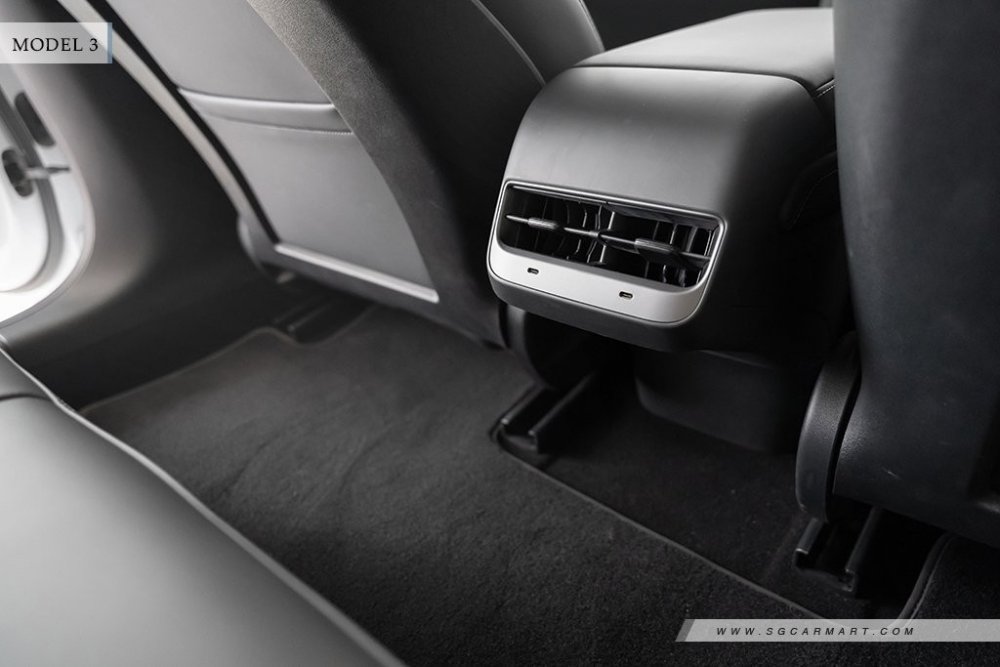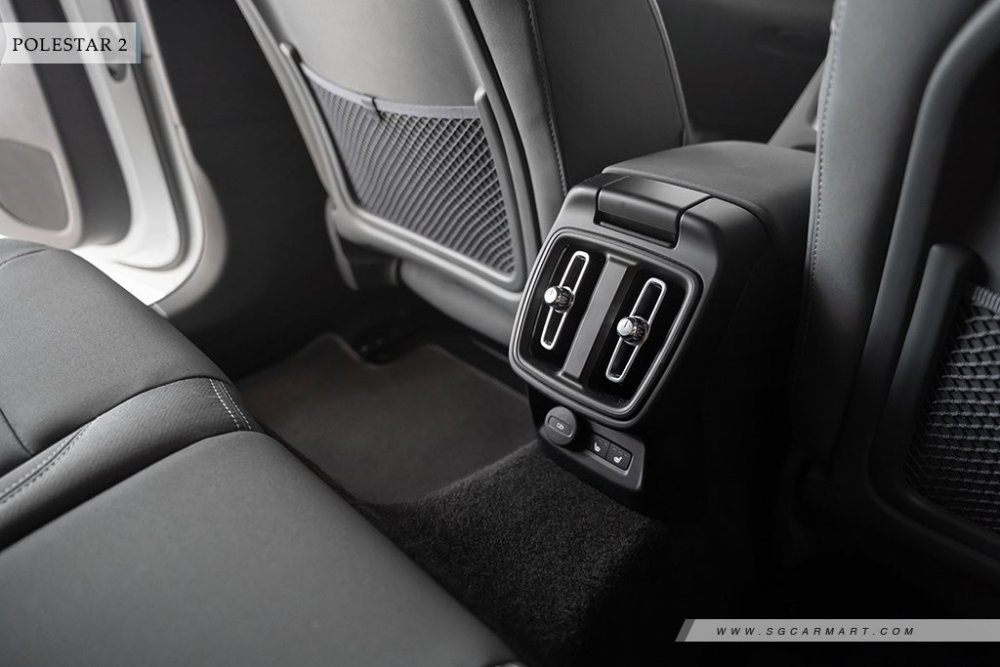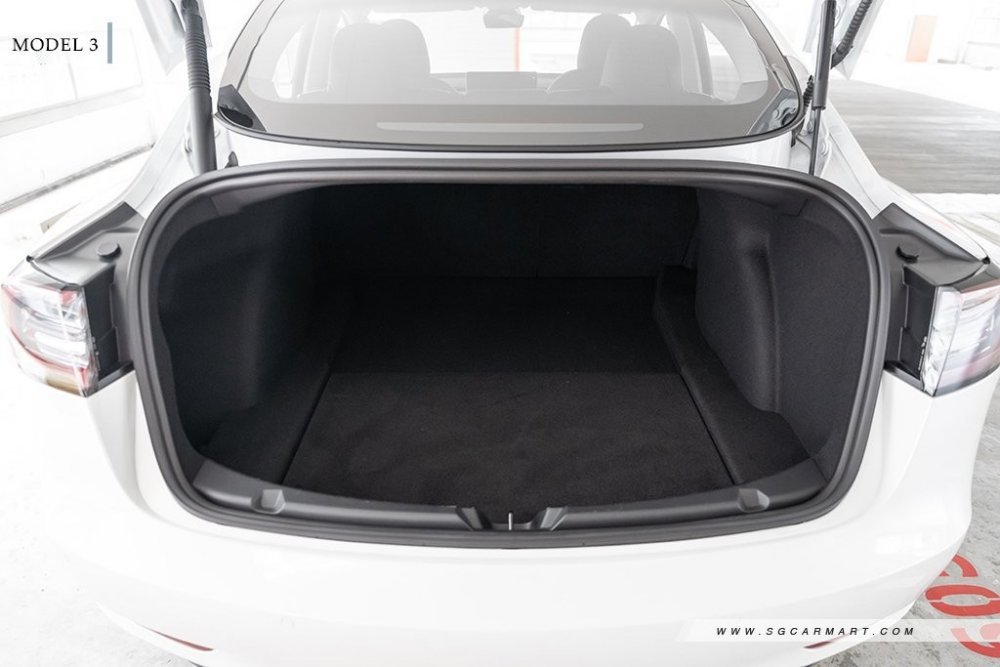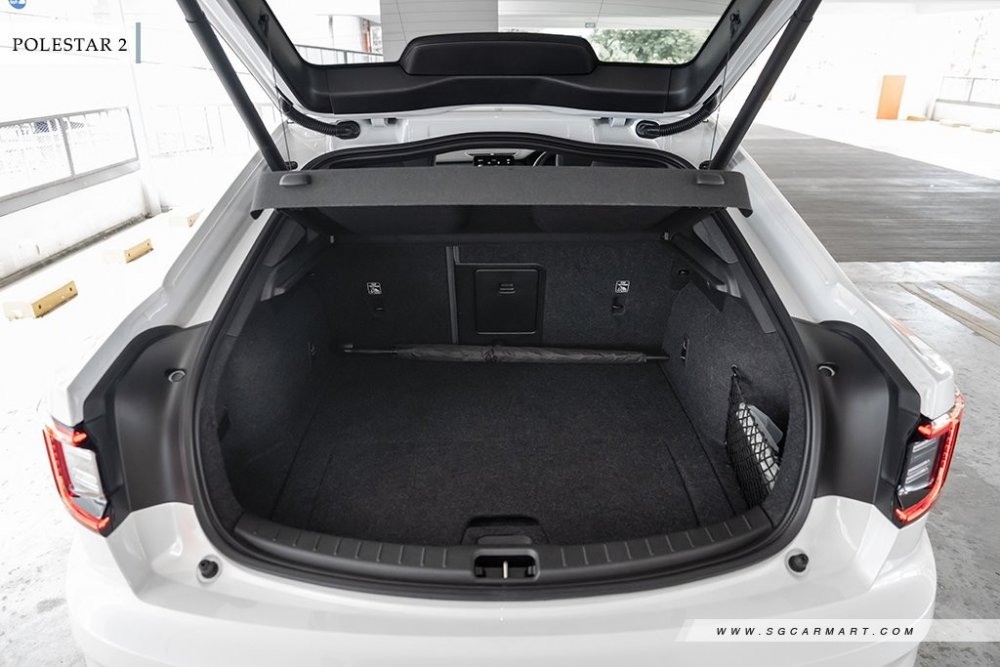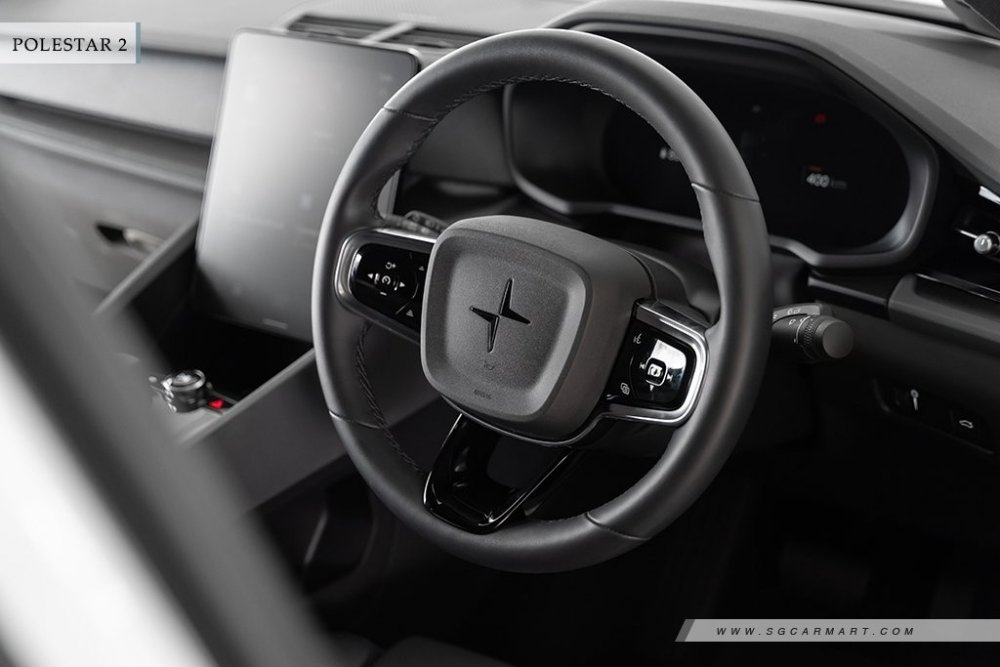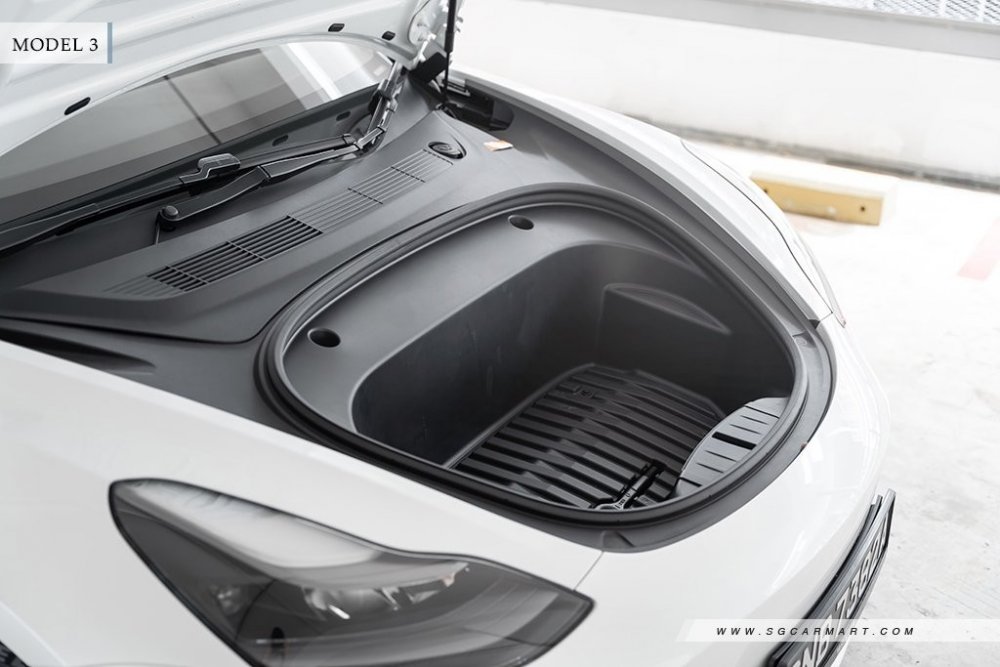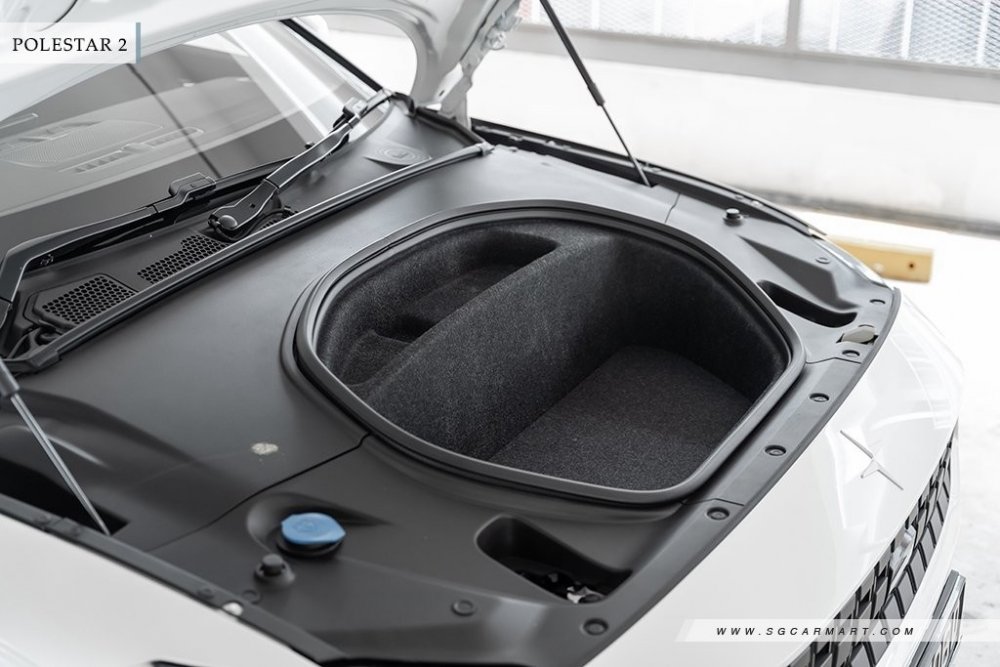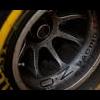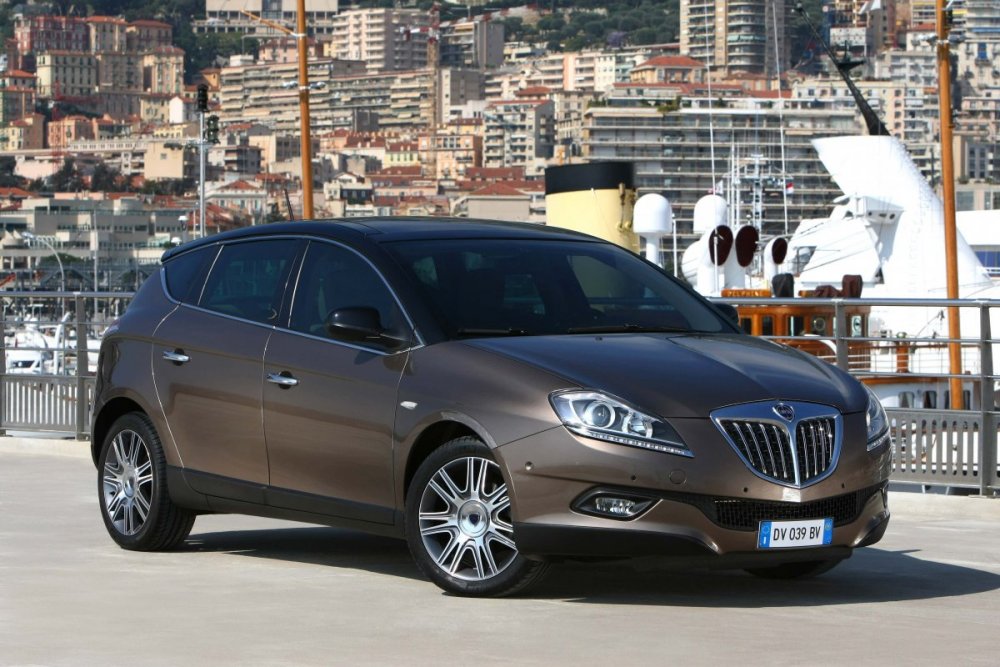Search the Community
Showing results for tags 'electric'.
-
Source: https://www.lowyat.net/2022/270902/smart-1-official-launch-specs/ Seven months after Concept #1 was revealed in Munich, the revitalise smart Automobile Co. has officially launched its first production model for the company’s new all-electric era, the smart #1. In case you’re wondering, the actual way to pronounce the EV’s name is “smart HASHTAG one” according to the official launch video. In case you are not familiar with the current iteration of smart Automobile Co., the company is no longer a full subsidiary of Mercedes-Benz but has been transformed into a joint venture between the company and Geely. As such, the Stuttgart giant is responsible for the design of the new smart #1 while the engineering portion is being handled by its Hangzhou counterpart. Exterior-wise, smart has generally retained the design lines of its Concept #1 for the production model albeit with some differences such as smaller 19-inch wheels, a less extravagant glass roof, and rear doors that still have front-mounted hinges. Measuring 4270mm long, 1822mm wide, and 1636mm tall alongside a wheelbase of 2750mm, the 1,820kg SUV also features concealed door handles and frameless doors together with up to 411L boot space and a 15L front boot. Alongside customisable ambient lighting, the smart #1 is equipped with touchscreen infotainment & vehicle control system that features a 12.8-inch Full HD display while the driver has also been provided with a 9.2-inch Full HD digital instrument cluster and a 10-inch Head Up Display. For the Premium and Launch Edition variants of the EV, there is also a 13-speakers audio system from Beats. Featuring a 200kw rear-wheel-drive setup that produces 272PS of power together with 343Nm of maximum torque, the SUV has a maximum speed of 180km/h. Through the car’s 66kWh battery, smart claimed that its new SUV is able to reach a maximum range of between 420km to 440km according to the WLTP standards. As always, charging times depends on the type of charger used with the smart #1. According to the company, the SUV can be charged from 10% to 80% in under 3 hours with a 22kW AC charger or in under 30 minutes when using a 150kW DC charger. Despite the official announcement today, smart didn’t reveal anything regarding the release date or the pricing for its new all-electric compact SUV. While Proton Edar has recently signed a deal to bring smart EVs into Malaysia, the company also has yet to make any official announcement regarding the availability of smart #1 for our market.
-
Good article by Mr Bean, and RADX please watch and please stop changing car so fast! Do your part as a living being! Thanks 😊
-
This compact electric SUV will be even smaller than the XC40, with an estimated dimensions of 4.2m (L) x 1.8m (W) x 1.6m (H). Design wise, the line between products from Volvo and Polestar is getting blurry, and can see that the rear windscreen is very narrow (by SUV standard), again compromising practicality for aesthetic appeal...
-
This should be the replacement for the >10 years old Sharan. Photos above are for the standard wheelbase version (4,712mm in length), which will be available in 5 or 6 seater configuration. A long wheelbase version will be added by next year which will be a proper 7 seater (2-3-2 sitting arrangement). The market launch of the ID. Buzz is scheduled for later this year when European customers will be offered a single 82.0-kWh (77.0 kWh net) battery option. Power comes from a single electric motor with 201 hp (154 KW) and 310 Nm of instant torque – figures that match the current VW ID.4. Unfortunately, Volkswagen is not ready to announce range numbers and these will follow at a later date. More battery versions and additional power output levels will be launched starting next year. The maximum charging power when plugged into an AC station is 11.0 kW, while a CCS connector at a DC station allows for charging rates of up to 170.0 kW. Recharging from 5 to 80 percent will take about 30 minutes at a fast-charging station. Customers in Europe will also benefit from an optional bi-directional charging function, which means they’ll be able to power their homes with the electricity in the battery.
- 21 replies
-
- 10
-

-
- volkswagen
- id buzz
-
(and 2 more)
Tagged with:
-
Kudos to Lotus for going against all odds to come out with this proper sedan of its own, no longer just a badge engineered Proton. Lotus Electric Sedan Shows Its Sleek Production Body For First Time Following the unveiling of the Eletre electric performance SUV, Lotus Cars is applying the finishing touches to another all-electric product that takes the sleek shape of a fastback sedan. Internally codenamed Type 133, the Lotus electric sedan may be named Envya or Etude based on earlier trademark filings from China. A prototype has been spotted by one of our photographers undergoing cold weather testing in northern Scandinavia, near the Arctic Circle. Previously shown in shadowy teasers, the Lotus electric sedan makes its first appearance in the wild without bulky disguise in the form of this test prototype, giving us the best look so far at the brand's future Porsche Taycan rival. Despite the livery that pays tribute to Lotus Cars' 75th anniversary, we can draw some conclusions about its styling. The sedan features several common cues with the Lotus Eletre. Those include the split headlights and rear light bar – though the prototype has placeholder lights at the moment – diamond-pattern active lower grille, rising belt line, rearview cameras instead of side mirrors, and pop-out door handles. Other details worth a mention include a roof-mounted LiDAR and massive ventilated brake discs hugged by chunky calipers. Overall, the low-slung fastback sedan looks aggressive and will certainly provide more surprises once the camouflage tape gets removed. Inside, the new Lotus EV is expected to share the seats and steering wheel with the Eletre, as well as other components. It will be a four-seater with a full-length center console, and it will likely offer a full glass roof. Not much else is known about the new model, and that includes the powertrain. However, the automaker doesn't have too look too far for a high-performance dual-motor AWD powertrain as it can borrow the dual-motor AWD setup from the Eletre R that makes 905 horsepower (675 kilowatts) and 985 Newton-meters (726 pound-feet) of torque. The Lotus Eletre R does 0 to 62 mph (100 km/h) in just 2.95 seconds and hits a top speed of 165 mph (265 km/h), so you can imagine this powertrain can achieve even superior performance when paired with a more aerodynamic (and possibly lighter) bodywork. Whatever powertrain this Lotus electric sedan prototype has under the skin, it wasn't working properly on that particular day as one of the photos shows it on the back of a tow truck. This is quite common for test prototypes, especially in early development stages. Lotus will reportedly unveil the Type 133 later this year, with sales expected to follow sometime in 2024.
-
https://asia.nikkei.com/Business/Automobiles/Toyota-to-develop-new-Lexus-EV-for-2026-incoming-president?utm_campaign=GL_JP_update&utm_medium=email&utm_source=NA_newsletter&utm_content=article_link&del_type=4&pub_date=20230214085958&seq_num=3&si=44594 Toyota to develop new Lexus EV for 2026: incoming president Koji Sato says company will first focus on making such cars for high-end market Toyota's first electric Lexus, the RZ, will be launched this year. (Photo by Hirofumi Yamamoto) SAYUMI TAKE, Nikkei staff writerFebruary 13, 2023 20:19 JST TOKYO -- Japanese automaker Toyota plans to develop a "next-generation" all-electric Lexus model by 2026 to meet rising demand for such luxury cars, according to the company's incoming president. "We aim to develop a next-generation battery EV in the Lexus brand in which everything from batteries and platforms to the way the car is built will be optimized for BEVs," said Koji Sato. As current chief of the brand, he oversaw the development of the first electric Lexus, the RZ, which is expected to be launched this year. BEVs refer to all-electric vehicles that are generally called EVs by other automakers, but Toyota uses this name to distinguish them from the hybrid, plug-in hybrid and fuel-cell vehicles that it also makes. Sato, who will replace Akio Toyoda in April as the new president and CEO of Toyota, made a speech and answered reporters' questions at a news conference on Monday. He named seven others who will form the new management team with him and talked about his plan to transform Toyota from a carmaker to a mobility company. "To deliver appealing BEVs, we need to drastically change the way we do business, from manufacturing to sales and service, with a BEV-first mindset," Sato said. "Lexus will lead this transformation." Koji Sato will take over as president of Toyota in April. (Screenshot from Toyota Motor's YouTube page) He pointed to the EV shift in developed countries, which is the main market for the Lexus brand, and said that Toyota is trying to meet such rising needs. Sato, a veteran Toyota engineer, said that electricity has "a different influence on aerodynamics... We have to sufficiently understand the characteristics of electricity... and take a step further and manufacture [the cars] in the best suited way." Toyota has faced criticism from environmentalists and investors for failing to catch up with its peers in the development of EVs. Sato pointed out that the emphasis on the electrification of Lexus was part of Toyota's goal to provide a range of vehicles that can meet demand from all buyers. "The energy situation is different in each country, and Toyota's unchanging policy is to consider the circumstances of each country," he said. Asked about concerns over Toyota's EV strategy, Sato said he regretted that there were "communication issues" around the matter. Toyota's EV strategy is for the mid to long term and it is currently focused on energy-saving efforts and cutting emissions from its models by using hydrogen fuel-cells and other technologies in addition to batteries, as well as in its day-to-day business operations.
-
Hi, my Mazda 3 (2014) driver's electric seat got problem. It now cannot 'rise up', but still can move forward, backward and down. Anyone knows where can repair and roughly what's the cost? Thank you.
-
Huawei has just unveiled the Seres SF5 - an electrified crossover, which will be sold at Huawei’s flagship stores in China. OK to be precise, the vehicle is not designed entirely by Huawei as it’s actually an updated version of the existing SF5 crossover, which made its original debut two years ago in Shanghai. Huawei says it has helped automotive company Seres with the development of the powertrain, which consists of a 1.5-liter gas engine and two electric motors. The combined output of the system is reportedly about 550 horsepower (410 kilowatts), which should be enough for a 0-62 miles per hour (0-100 kilometers per hour) acceleration in just 4.7 seconds. More importantly, Huawei promises the plug-in hybrid can travel up to 112 miles (180 kilometers) on purely electric energy, though it’s important to note that this is measured by China’s somewhat generous test cycle. With the battery fully charged and the fuel tank full, the SF5 should be capable of a range of over 621 miles (1,000 km) in “extended range mode for long distance travelers.” Huawei’s input is probably more visible inside the cabin where there’s a large tablet-style screen for the infotainment system. The company says it has paid special attention to the crossover’s audio system, which consists of 11 sound units to deliver “opera-like sound quality.” Another interesting feature of the SF5 is the vehicle-to-vehicle charging function, which can power other vehicles or external devices such as induction cookers, stereos, and other camping equipment. "This exciting announcement sets a precedent for both the consumer electronics industry and the new energy vehicle industry,” Richard Yu, Executive Director at Huawei, commented. “In the future, we will not only provide leading smart car solutions to help partners build better intelligent vehicles, but also help them sell those vehicles through our retail network across China." Speaking of China, Huawei is already accepting orders for the SF5 in the People’s Republic with prices starting at 246,800 RMB (~S$50K at the current exchange rates) for the 4WD model and 216,800 RMB ($44K) for the 2WD variant.
- 24 replies
-
- 16
-

-
Been a late comer to the EV era, I think this show hand / all-in moment is Toyota way of playing catch up (heh look here, I have everything ready ok!)... But the fact remain that they are quite far behind other big names from Europe, Korea and China. During the media briefing on battery EV strategies, Akio Toyoda shocked the automotive world by unveiling 15 fully electric concepts previewing future models of Toyota and Lexus. What must be the largest rollout of concept cars in history includes everything you can imagine, from city cars, sedans, SUVs of all shapes and sizes to pickups and sportscars. Some of them are based on existing models, but there are also several all-new vehicles based on the EV-dedicated e-TNGA architecture. The “showroom of the future” as Akio Toyoda called it, had a bunch of other EVs hiding behind the curtain. The lineup for the Lexus brand includes its first dedicated EV called the RZ which is the production version of the LF-Z Electrified concept. Then there is a sports battery EV that looks like the spiritual successor of the LF-A with an expected cruising range of over 700 km (435 miles) thanks to solid-state batteries, and an expected 0-100 km/h (0-62 mph) acceleration in the low 2-second range. Additionally, we saw full-size prototypes of a large SUV (Lexus Electrified SUV) and an unnamed Lexus-branded sporty sedan. The latter also appeared in hatchback form in the official renderings, alongside a 2+2 cabriolet featuring similar styling. Last but not least, Akio Toyoda showed us another series of models calling them “the diverse Toyota EVs”. These include commercial vehicles like an autonomous shuttle bus, a compact van designed for both business and leisure, and a versatile urban EV. The Compact Cruiser EV incorporates styling features from the FJ Cruiser in what could become an off-road-focused five-door EV. Next to it, there is Toyota’s first electric dual-cab pickup which appears to be similar to the Hilux or the Tacoma in terms of dimensions but gets modern design features inspired by the larger Tundra. The Small SU EV looks like an electric CH-R with a dynamic styling approach, while the Crossover EV is slightly larger and more subtle in terms of exterior design, likely previewing Toyota’s entry into the C-SUV segment. Finally, there is an EV sportscar with mid-engined proportions and a two-seater cabin which could become the future MR2 serving as Toyota’s treat for petrolheads. T.B.C.
- 28 replies
-
- 13
-

-
.png)
-
As I have mentioned in a few threads here, China is the leader in EV development and many big names in the automotive industry are trying hard to form JV with some of these well establish EV manufacturers. And I vividly remember 1 MCFer even asked for 'China Talk' folder to be removed from the forum, wait till you see the motoring trend in the next 3 - 5 years... BTW, noticed that it is BYD Toyota EV Technology instead of Toyota BYD EV Technology? BYD, Toyota Launch BYD TOYOTA EV TECHNOLOGY Joint Venture to Conduct Battery Electric Vehicle R&D Toyota City, Japan, April 2, 2020―BYD Company Ltd. (BYD) and Toyota Motor Corporation (Toyota) announced today that preparations have proceeded since they signed an agreement for the establishment of a joint venture company to conduct research and development of battery electric vehicles (BEVs) on November 7, 2019, and registration of the new company has been completed. Operations are scheduled to commence in May 2020. The name of the new company is BYD TOYOTA EV TECHNOLOGY CO., LTD. (BTET). Hirohisa Kishi from Toyota will serve as chairman, and Zhao Binggen from BYD will be the chief executive officer (CEO). New Chairman Hirohisa Kishi said with regard to the establishment of the company, "With the engineers from BYD and Toyota working together under the same roof, we aim to develop BEVs that are superior in performance and meet the needs of customers in China by merging the two companies' strengths and also through friendly rivalry." Newly appointed CEO Zhao Binggen commented, "This joint venture company will focus on the research and development of battery electric vehicles with technology and know-how from both China and Japan. The company is committed to promoting and populating high-quality technologies that make battery electric vehicles more environmentally friendly, safe, comfortable, and intelligent. Our vision is to create a future customer-first mobility style, and a harmonious society for humans and nature." BYD and Toyota will work together to meet the diverse needs of customers by researching and developing BEVs that appeal to customers and promoting their widespread adoption and also hope to contribute to improving the environment in China. Overview of the Joint Venture Company Name: BYD TOYOTA EV TECHNOLOGY CO., LTD. (BTET) Location: Head officePingshan District, Shenzhen City, Guangdong Province Chairman: Hirohisa Kishi (Senior Executive Vice President, Toyota Motor Engineering & Manufacturing (China) Co., Ltd.) CEO: Zhao Binggen (BYD Company Ltd.) Directors: 6 (3 from Toyota and 3 from BYD) Auditors: 2 (1 from Toyota and 1 from BYD) Business Activities: Design, development, etc. of battery electric vehicles and their platforms and related parts Equity participation: Toyota Motor Corporation (50%), BYD (50%) Employees: Approx. 300
- 18 replies
-
- 10
-

-
.png)
-
My personal opinion is that the Model 3 is the better looking car and is where I would put my money (not that I have any). I used to think that it looks identical to the Mazda3, at least the frontal and side profile but after having driven one, I concede my impression did changed for the better. I don't know about the Polestar 2 but the surround sound system in the Model 3 Performance is superb 😆 Plus the oddly tall ride height of the Polestar 2 resembles a crossover more than a sedan, and that's not exactly to my liking. Read our comparison review on the Model 3 vs Polestar 2 here https://www.sgcarmart.com/news/review.php?AID=1889 The banner is in yellow and blue for obvious reasons...
- 142 replies
-
- 7
-

-
- model 3
- polestar 2
-
(and 3 more)
Tagged with:
-
https://asia.nikkei.com/Business/Automobiles/Southeast-Asia-on-cusp-of-EV-revolution-as-local-production-begins?utm_campaign=GL_asia_daily&utm_medium=email&utm_source=NA_newsletter&utm_content=article_link&del_type=1&pub_date=20220621123000&seq_num=5&si=44594 Southeast Asia on cusp of EV revolution as local production begins Chinese and South Korean automakers zoom past Japanese rivals on electrics A Good Cat electric vehicle by Ora, a brand of Great Wall Motor, is displayed at the Bangkok International Motor show. © Reuters YOHEI MURAMATSU and YUICHI SHIGA, Nikkei staff writersJune 21, 2022 07:12 JST BANGKOK/MANILA -- The electric vehicle market is taking off in Southeast Asia as automakers plan to start production in at least three countries this year, a key step toward making the cars more affordable to the region's consumers. Many of these companies are based in China and South Korea, while Japanese automakers -- which now account around 80% of new-car sales in Southeast Asia -- fall behind. Just months after Hyundai Motor began full-scale production at its new electric vehicle factory in Indonesia, China's SAIC-GM-Wuling Automobile unveiled a new mini EV slated to start production in the Southeast Asian country by the end of the year. Wuling is a driving force in China's growing EV market, selling 420,000 Hongguang Minis -- which start at 32,800 yuan ($4,880) -- there last year. The company has yet to announce the price of its new model in Indonesia. But a similarly priced auto could ignite the EV market in that country, where the majority of models now cost over $35,000. Around 700 new EVs were sold in Indonesia last year. Indonesia is tapping its rich mineral reserves to promote battery production and other EV-related businesses. Jakarta aims for electrics to make up 20% of all automobiles produced in the country in 2025, and is offering tax incentives for manufacturers to encourage new investments. Thailand wants electrics to make up 30% of its auto production by 2030. On June 9, the country lowered taxes on electric cars to 2% from 8% in exchange for promises to start local production in the future. The government also provides a subsidy of up to 150,000 baht ($4,240) per EV. China's Great Wall Motor responded by slashing the starting price of its Ora Good Cat by around 8%, to 763,000 baht. The company has received bookings for over 4,700 Ora vehicles since they went on sale in Thailand during November, more than double the country's entire EV sales in 2021. Great Wall looks to reduce prices further by starting Thai production as early as 2023. Toyota Motor and SAIC Motor also are taking advantage of the Thai incentives. Toyota is expected to start selling Japanese-built EVs in Thailand later this year, with plans to switch to local production as early as 2024. A VF9 electric SUV by VinFast is displayed at the Las Vegas Convention Center. The Vietnamese company was the first to produce EVs in Southeast Asia. © Reuters The Mercedes-Benz Group plans to start assembling vehicles in Thailand this year, while Thai state energy group PTT aims to begin EV production in 2024 with Hon Hai Precision Industry, the Taiwanese manufacturer also known as Foxconn. Volvo Cars announced in March that it had begun assembling vehicles in Malaysia. The Fieldman Group, a Malaysian producer of palm oil and other commodities, said in January that it would build a joint EV assembly plant with China's Changan Automobile. VinFast, the automaking arm of Vietnamese conglomerate Vingroup, began selling locally made EVs in December. It plans to manufacture and sell vehicles in the U.S. as well. In the Philippines, a laggard on electrics, a law to bolster the EV sector took effect in May. It requires logistics providers and public transportation operators to electrify at least 5% of their fleets by a date to be decided later. The government is weighing new incentives for the import and manufacturing of such vehicles. But the region's lack of charging networks inhibits widespread adoption of EVs. Critics also say the vehicles will do little to curb carbon emissions in Southeast Asia, since many of the countries rely heavily on fossil fuels for electricity. Japanese automakers are focusing instead on plug-in hybrids in Southeast Asia. Meanwhile, Chinese and South Korean players are building charging infrastructure in the region themselves to cultivate demand. Japan risks losing its grip on the Southeast Asian market, given forecasts that electrics could overtake gasoline-powered cars by sales in 2035.
-
https://www.channelnewsasia.com/news/singapore/electric-vehicle-ev-common-charger-grant-lta-condo-15247874 Condos, private apartments eligible for new grant to install electric vehicle chargers Good news for Electric car owners: As always, the devil is in the details: What if the car doesn't move and hog the lot Who is going to pay and can you 'steal' the charger by parking next to it and removing his charger Will there be new fire hazards rules - eg a fire system on top of the charger and a fail safe switch to avoid electrocution What kind of charging points? Like phones, each car may have different charging cables or points... Should be interesting..
-
Not many formula E threads here but isn't Singapore going green? Maybe we can host the race here as well? https://en.wikipedia.org/wiki/Formula_E Formula E, officially the ABB FIA Formula E World Championship,[1] is a single-seater motorsport championship for electric cars. The series was conceived in 2011 in Paris by FIA president Jean Todt and Spanish businessman Alejandro Agag, who is also the current chairman of Formula E Holdings.[2] The inaugural championship race was held in Beijing in September 2014.[3] Since 2020, the series has FIA world championship status.[4] Regulations The Spark SRT05e demo car at the 2020 Autosport International The Formula E championship is currently contested by eleven teams with two drivers each.[10] The sport features electric-powered race cars similar in style to the hybrid-drive cars of Formula One. Racing generally takes place on temporary city-centre street circuits, 1.9 to 3.4 km (1.2 to 2.1 mi) long.[11] Race day format A race day starts with two practice sessions in the morning: an opening 45-minute session followed by a further 30-minute session. During these sessions, the drivers are free to use the full qualifying power output (currently 250 kW (335 bhp)).[12], with a single 45 minute session on a double header sunday. From season 8, all practice sessions are 30 minutes. The qualifying session takes place later in the day and lasts approximately one hour. Under the current format (introduced in season 8), the drivers are split into two groups based on their position in the championship, those in odd-numbered places go into group A, while those in even-numbered places go into group B. The exception is in the first race of the season, where each team can nominate one driver into each group. Each group gets a 10-minute session to set a fastest lap at 220kW, of which the top 4 of each group will advance to the "duels" stage, where drivers face off head-to-head at 250kW over a quarter-final, semi-final and final. The winner of the final then lines up in position 1, the loser of the final in position 2, the losers of the semi-final in positions 3 and 4, and the losers of the quarter-final in positions 5 through 8, in order of time set in their respective sessions. The rest of the drivers from the group stage are placed alternately from position 9, with the polesitter's group in the odd places, and the other group in the even places.[13] The first four seasons had a lap distance set, usually an odd number, with pit-stops to swap cars half way through as the batteries lacked the capacity to last the whole race. During the second generation, the race is set to 45 minutes plus one lap. The introduction of the Gen2 car meant pit stops are no longer necessary, because the battery lasts for the full race. Since the all-weather tyres are designed to last for a whole race, pit stops are currently only needed to change a punctured tyre or to perform repairs on the car. In race mode the maximum power is currently restricted to 200 kW (268 bhp). Point scoring Points are awarded to the top ten drivers using the standard FIA system (25-18-15-12-10-8-6-4-2-1). The driver securing the pole position is also awarded 3 points, while the driver setting the fastest lap (if they finish in the top ten) additionally receives 1 point (2 points during the first two seasons). In addition, for season six and seven (2019-21) the driver achieving the fastest lap during group qualifying was awarded 1 point.[14] The championship consists of both a drivers' and teams' championship. A driver's end of season total is made up of a driver's best results. A team's total is made up by counting both drivers' scores throughout the season.[13] Fanboost For each race, fans can vote for their favorite driver via the official website or app to give them an extra power boost which can be activated by pushing an overtake button. Voting starts 3 days before the event and closes after the opening 15 minutes of the race. The five winning Fanboost drivers each receive an extra power burst that can be used in a 5-second window during the second half of the race.[13] Attack mode With the fifth season, a feature called Attack Mode was introduced, in which drivers received an additional 25 kW in season 5 (35 kW in season 6 and 7)[15] of power after driving through a designated area of the circuit off the racing line. The duration of the boost mode and the number of boosts available are decided only shortly before each race by the FIA to reduce the time the teams have to find the optimal strategy.[16] All attack modes must be activated at the end of the race, but do not need to be used up (i.e. if a final attack mode is activated in the penultimate lap, the driver is not penalized for having it still activated at the end of the race). If there is a full course yellow period or a safety car, attack mode is not allowed to be activated. For season 6 and 7,[17] each minute under safety car or FCY, 1 kWh of energy is removed from the total usable energy, giving drivers and teams more energy management tactics. From season 8, added time is used, where every full minute under a safety car or full course yellow within the first 40 minutes, 45 seconds is added to the race time up to a maximum of 10 minutes.[18] https://www.fiaformulae.com The Official Home of Formula E | FIA Formula E https://www.fiaformulae.com/en/championship/race-calendar https://www.fiaformulae.com/en/results/standings/driver https://www.fiaformulae.com/en/championship/teams-and-drivers www.fiaformulae.com/watch/ways-to-watch Can watch races here too https://www.youtube.com/c/FIAFormulaE/featured
- 20 replies
-
Insurance premiums for electric cars can go up to S$5,000 a year In general, the lack of claims data for EVs due to the small population, costlier components such as the battery and fewer workshops with mechanics trained in EV maintenance and repair are some challenges insurers face while formulating the appropriate level of coverage, said several insurers who were responding to queries from The Business Times. https://www.businesstimes.com.sg/transport/insurance-premiums-for-electric-cars-can-go-up-to-s5000-a-year
-
Volvo Cars bets on electric vehicles Volvo Cars is only going to sell electric vehicles by 2030, the Swedish firm has said. It will phase out all car models with internal combustion engines by then, including hybrids. The carmaker is also planning to invest heavily in online sales and simplifying its products. It is trying to capitalise on growing demand for electric cars, including in China, which is already one of its biggest markets. Carmakers are also responding to pressure from governments around the world to beef up their electric car plans. New cars and vans powered wholly by petrol and diesel will not be sold in the UK from 2030, for example. "To remain successful, we need profitable growth. So instead of investing in a shrinking business, we choose to invest in the future - electric and online," said chief executive Hakan Samuelsson. Its online push means customers will be able to order cars to their own specification online, but also through a dealership. Volvo will not be investing in cars with hydrogen fuel cells, as it does not think there will be enough demand from customers. There is also a question mark over hydrogen's availability in comparison with charging points for electric cars, a spokesman said. Volvo previously announced that by 2025, half of its sales would be fully electric, with the rest being hybrids. "There is no long-term future for cars with an internal combustion engine," said Henrik Green, the firm's chief technology officer. In February, Volvo abandoned plans to merge with Chinese car giant Geely. But the two companies said instead that they would form a partnership to make components for electric cars that would be used by both firms. Global carmakers continue to pursue alliances to spread the cost of the transition to electric cars, tougher emission rules and autonomous driving, as well as pooling expertise and resources. In January, shareholders approved a merger between Fiat Chrysler and France's PSA Group, creating the world's fourth biggest carmaker. The new group, Stellantis, would be able to "bet big on new innovations in electric, connected and autonomous vehicles", analysts said at the time. https://www.bbc.com/news/business-56245618
-
Whether we like it or not, electric vehicles are the future. With the growing awareness that the world is literally burning, most car manufacturers are making the shift to electric. Here in Singapore, while progress has perhaps been slower than anticipated, we are seeing a gradual shift towards electrification - both on the buyer’s end, as well as the infrastructure to support these cars. And unlike even just a couple of years ago, these days, living with an EV is increasingly easy. 1. More choices In 2014, there was only one electric passenger car available to the Singaporean driver for purchase: The affable and unmistakeable BMW i3. Now, however, choices run the gamut of the entire car industry. Encompassing not just compact hatchbacks, but proper sedans and SUVs as well, electric cars cover an entire range of prices, from more mass market targeted models to super high-end luxury models. If there isn’t one now (and that’s already quite unlikely), it’s guaranteed that an electrified car that suits your needs, lifestyle preferences and budget is on the near horizon. On the note of budget, increasing scales of economy coupled with legislation that encourages the uptake of electric vehicles mean that the days of exorbitantly priced EVs are disappearing into our rearview mirrors - great news for all of us! 2. Growing charging network Singapore’s charging network today is already miles ahead of what it was just a couple of years back. Even so, we can expect even greater things on the road ahead. Returning to the i3, we reviewed this premium and peppy little runabout twice - in 2014, and then again in 2017 - and twice, we lamented that Singapore’s charging infrastructure had not caught up sufficiently to make it magnetic enough for consideration. Thankfully, things are very different at the dawn of 2022. 2021 was a watershed year for the electrification of cars in Singapore. It wasn’t just the fact that more brands were opening up their showroom doors for new electric models to zip into our market. More importantly, we received multiple signals that the time of an electric Singapore was finally nigh. From HDBs to shopping malls, we will soon find spaces to seamlessly integrate charging our cars into our daily routines. It was announced in September last year that 620 charging stations will be progressively installed around HDB carparks by the third quarter of this year. In line with the Singapore Green Plan, eight towns spread out across the island have also already been gazetted as “EV-ready”, and will be prioritised for the installation of charging points. Back in 2019, only 1,900 of such charging stations existed on our island. When 2030 swings around, at least 60,000 charging points will have been also installed, with 40,000 of them designated for public carparks. In the meantime, modern solutions - such as mobile apps for locating chargers near you and tracking the progress of charging - also promise to make the process intuitive and easy. 3. Ease of parking Another benefit of going electric is the access to unique perks - in the form of priority parking. In increasing numbers, you would have surely noticed car park lots in shopping malls being painted over in green over the last few years. Reserved only for the drivers of hybrid and electric cars, these are sure to proliferate further as we move towards cleaner vehicles. If you happen to the proud owner of one of these cleaner-emission cars, the perks you can enjoy are in fact actually twofold. Firstly, instead of having to circle around endlessly for space, you can immediately slot yourself into one of these green lots - an undeniable relief especially in malls that typically packed to the rafters. Secondly, these lots are typically situated the closest to the main entrances to the malls from car park, making entry and exit extremely convenient. To further the electric transition, BMW and Capitaland are collaborating to offer BMW EV and PHEV drivers $5 off parking daily at three well-loved Capitaland malls - Plaza Singapura, Funan and Raffles City Shopping Centre - from 1 Mar 2022 to 31 Dec 2022*. Redemption of the credits is fuss-free - simply present your car key and BMW Performance SG App or BMW Charging card to the respective Customer Service Counter of each mall to get a reward code. Upon keying in the reward code, an eVoucher will be issued via their CapitaStar mobile app and $5 will be deducted from their parking charges upon their exit.. The eVoucher has to be activated 15mins prior to exciting the carpark. *Redemption is limited to one CapitaStar member per day.
- 2 comments
-
- 1
-

-
- electric
- electric vehicle
-
(and 1 more)
Tagged with:
-
YouTuber Alex Choi attended a Tesla meeting where owners showed what modifications they made to their cars. Everything ran smoothly, and everyone was enjoying their time there. But the night ended in a completely different matter. Choi was approached by a Tesla owner that, out of the blue, wanted to show him where David Dobrik (a.k.a Borat) jumped his EV from Elon Musk’s company. Since this was a friendly encounter and a curious invitation, he accepted. What he didn’t expect was to see this owner attempt a jump in that exact spot with his brand-new Tesla Model S. The YouTuber even says that the driver of the flying and now totaled Tesla attempted this on its own. Moreover, he’s done without any practice or test run beforehand. Naturally, a crowd gathers, and everyone starts filming. For some reason, the owner of the acrobatic Tesla violently accelerated, and the jump instantly became a very short flying lesson. The outcome, well… You can see it for yourself. The car was destroyed. What’s sad is that other innocent owners had their cars damaged as well because the impact on the ground was so brutal. Fortunately, nobody was seriously hurt. Apart from the new Tesla and some other damage to public property, nothing else went wrong. Still, the video is further proof that Model S vehicles are safe and can protect even the most adventurous drivers. https://www.autoevolution.com/news/brand-new-tesla-model-s-jumps-50-feet-into-the-air-everybody-s-speechless-184385.html Great conclusion right there lol.
-
Wet dream for wagon lover... The Avant E-Tron shares the same dimensions as the earlier A6 Sportback E-Tron Concept. Both are 4.96 meters long, 1.96 meters wide, and 1.44 meters tall. The difference is in the rear styling where the Avant has a more angular roof to make room for the larger cargo area. The result of this sleek look is a 0.24 drag coefficient, versus 0.22 for the Sportback. The A6 Avant E-Tron Concept rides on the Premium Platform Electric (PPE), which is also underneath the forthcoming Q6 E-Tron crossover. It has an electric motor turning each axle for a total output of 469 horsepower (350 kilowatts) and 800 Newton-meters of torque. Audi isn't disclosing the exact battery capacity but indicates the figure is around 100 kilowatt-hours. The 800-volt, 270-kilowatt recharging capacity allows for getting 300 kilometers of WLTP range within as little as 10 minutes. Less than 25 minutes is necessary to take the pack from 5 to 80 percent. Depending on the powertrain, the production A6 Avant E-Tron would be able to reach 100 kilometers per hour in less than seven seconds or as quick as "well under four seconds" for high-performance models, according to the company's announcement. A rear-drive version of the electric A6 Avant would be capable of 700 kilometers on a charge.
- 20 replies
-
- 14
-

-
https://www.straitstimes.com/singapore/politics/budget-debate-new-coe-criteria-for-evs-charging-points-to-be-installed-in-nearly-2000-hdb-carparks-by-2025
-
Really looks like an OEM
-
🤣
- 110 replies
-
- 10
-

-
.png)
-

Lancia returns to rallying with an electric Delta Integrale
enzoalec92 posted a topic in Motorsports
<A 670-HP Lancia Delta Integrale EV Will Tackle World Rallycross in 2022 With the FIA's WRX series going electric, now's the time to revive a true classic. Ahh, rallycross going electric. It feels like someone invents a new version of it every week, probably because rallycross sort of has the ideal format for cars with limited range. The races are just 6-9 minutes long, but it's also tough actually making electric cars you can rattle the absolute hell out of around a jump track while keeping the safety standards somewhere north of acceptable. And then there are the costs. The FIA World Rallycross championship is, after years of skirting the issue, finally taking the plunge next season. One of the entrants, French outfit GCK Motorsport, is bringing things back to the old school by using the 500-kilowatt, dual-motor electric powertrain and battery from Kreisel (the people who are also bringing you insane hydrofoil racing) and fitting it to a Lancia Delta Integrale. That car's a volatile legend of rallycross' past, as well as a six-time World Rally Championship title winner. GCK Although there's obviously gonna have to be a fair amount of screwing around with it, this really will have a Delta Integrale chassis, somewhere in its base. The Integrale wasn't the Group B Lancia–that was the completely haphazard Delta S4, a beast with, as you'd expect in rally, more horsepower than sense that could reportedly pull up to 800 hp in a final race. Instead, the Integrale was a Group A competitor that still won over everyone's hearts. But rallying and Lancia Deltas go together like me and standing by the side of the course getting a face full of gravel, so this is more than a welcome development in any case. GCK already made a restomod version of the Lancia Delta Integrale that looks mighty lovely zooming around a smooth circuit because it's a car that's shaped like the most satisfying box and it's got the handling of a modern EV. That's all nice and good and I definitely wouldn't be angry if someone offered to let me (or preferably Stef) hoon one round the Nordschleife. But it's not the roaring, angry, roughness of whatever makes people want to snout rallycross cars around dirt tracks like 670-horsepower truffle hunters. LANCIA The WRX series is very keen to make some, frankly, fairly wild claims about the cars accelerating faster than F1 (yes, for a short period and if the F1 car doesn't have ERS). To be honest, when you're as obscure as rallycross has ended up these days, you can pretty much say absolutely anything and it'll either please all 15 incredibly passionate Estonians following the championship or everyone will just ignore it, anyway. For sure, at least, WRX has a decent grid put together for next year with 14 entrants to the 2022 title. And y'know, 671 horsepower and 880 newton-meters of torque in cars this size is going to be rude and fun as hell whatever you do with it. It took less than that to impress Ken Block, after all. At the very least, this is a more dignified progression of the Delta into the future than what Lancia actually did with it, which was to take on a very 2021 process way back in 2009 and turn what used to be the symbol of manic, gutsy handling into a completely vile crossover it hurts to look at. Please don't bring this one back as electric, Stellantis—you're on watch. LANCIA> -
If you think you have seen this car before, you are not wrong. This electric SUV from Subaru is a badge-engineered Toyota bZ4X. In developing Solterra, the brand's first battery electric vehicle (BEV) to be launched globally, Subaru aimed to exceed the various customer expectations for BEVs and make it a practical vehicle so that customers can choose it comfortably and confidently, as the vehicle will be the cornerstone of Subaru's future BEVs. At the same time, as a Subaru SUV, Subaru aimed to make it a vehicle that existing Subaru customers can feel that it truly is a Subaru. By filling it with new values that a BEV can offer and the value of "enjoyment and peace of mind" that Subaru have cultivated over many years, Solterra has been built as an authentic SUV in an environmentally friendly package that can be used with peace of mind like the existing Subaru SUV models. Exterior and Interior The seamlessly shaped hexagon grille expresses the energy efficiency of a BEV. The body with the horizontal axis starting from that hexagon and the dynamic fenders bulging out from the inside show the strength as an SUV. Low instrumental panel and top mounted meters, a first for Subaru, located on the instrumental panel and visible above the steering wheel realized the spacious interior. e-Subaru Global Platform Utilizing the know-how cultivated with the highly recognized Subaru Global Platform, we have jointly developed the e-Subaru Global Platform together with Toyota Motor Corporation as a BEV-dedicated platform. The e-Subaru Global Platform enables a driving experience with superior driving dynamics, that brings high stability and handling linearly responds to driver's steering operation. High capacity battery packs are placed under the floor as it is a BEV, and by utilizing that battery as a part of the structure, a low center of gravity and high body strength and rigidity are realized. Driving Performance/AWD System Subaru Solterra has adopted a new system that drives the front and rear wheels with separate motors. Taking advantage of the expertise in AWD technology precisely controlling the four tires that Subaru has accumulated over many years, the agile response of the electric motors and the flexible driving force distribution between front and rear, Solterra fully utilizes the grips of the four wheels and offers a driving with confidence and peace of mind. Like the other Subaru SUV models, Solterra features the X-MODE AWD control system that enhances the sense of security on rough roads. By adding the new Grip Control function, which enables the vehicle to run at a constant speed while stabilizing the vehicle even on rough roads, the capability is further enhanced. Safety By devising the skeleton shape of each part of the body and optimizing the material strength, Solterra achieves both weight reduction and superior collision safety at the same time. In the event of a collision, the structure that transfers the load to multiple body skeletons efficiently absorbs the collision energy. It protects not only the vehicle occupants, but also protects the high-voltage equipment in the BEV. Solterra is the vehicle which takes an important role for Subaru, the company aiming at "delivering happiness to all," to face the challenges of global warming and climate change and continue to deliver smiles in the future. The vehicle has been jointly-developed by Toyota and Subaru, which entered into a new business and capital alliance in September 2019. They brought together technologies and knowledges that are expertise of each under the slogan "Let's make ever-better cars together" and the engineers of both companies developed it together while engaging in a friendly rivalry. The launch of the Subaru Solterra will start by the middle of 2022 in the markets including Japan, the United States, Canada, Europe and China.
- 18 replies
-
- 13
-




